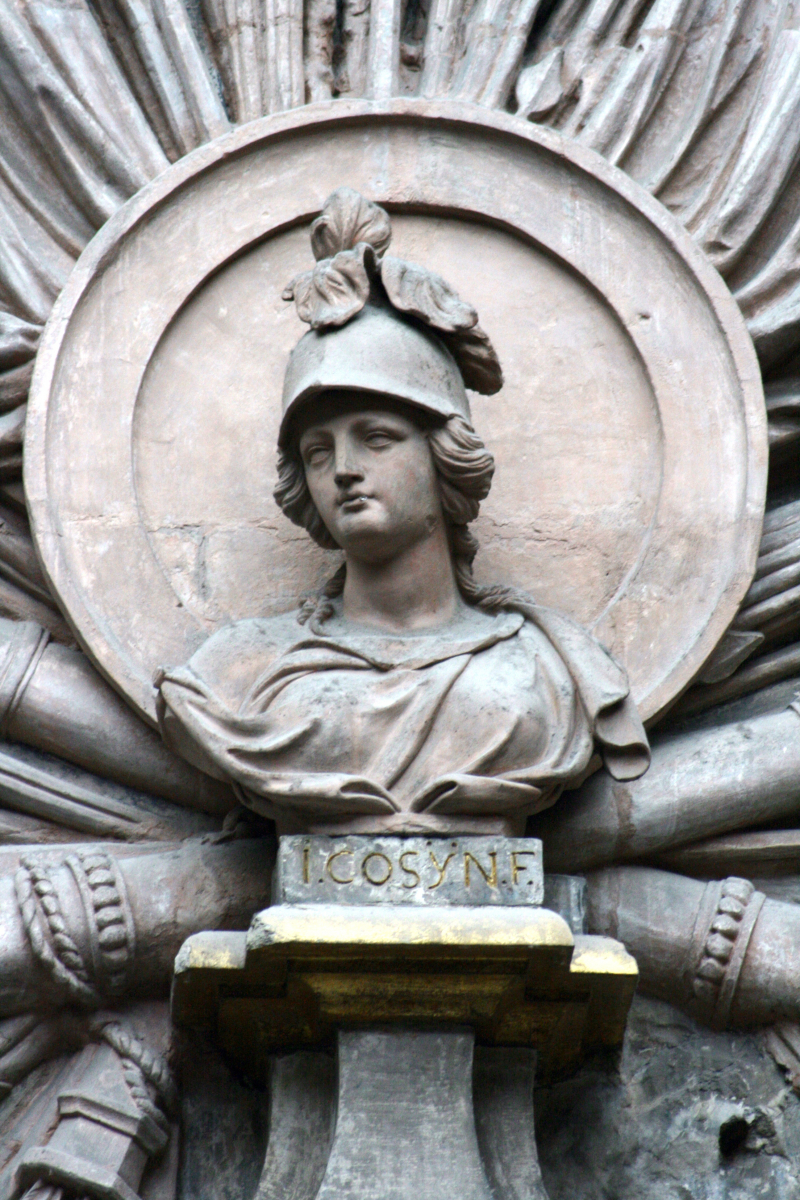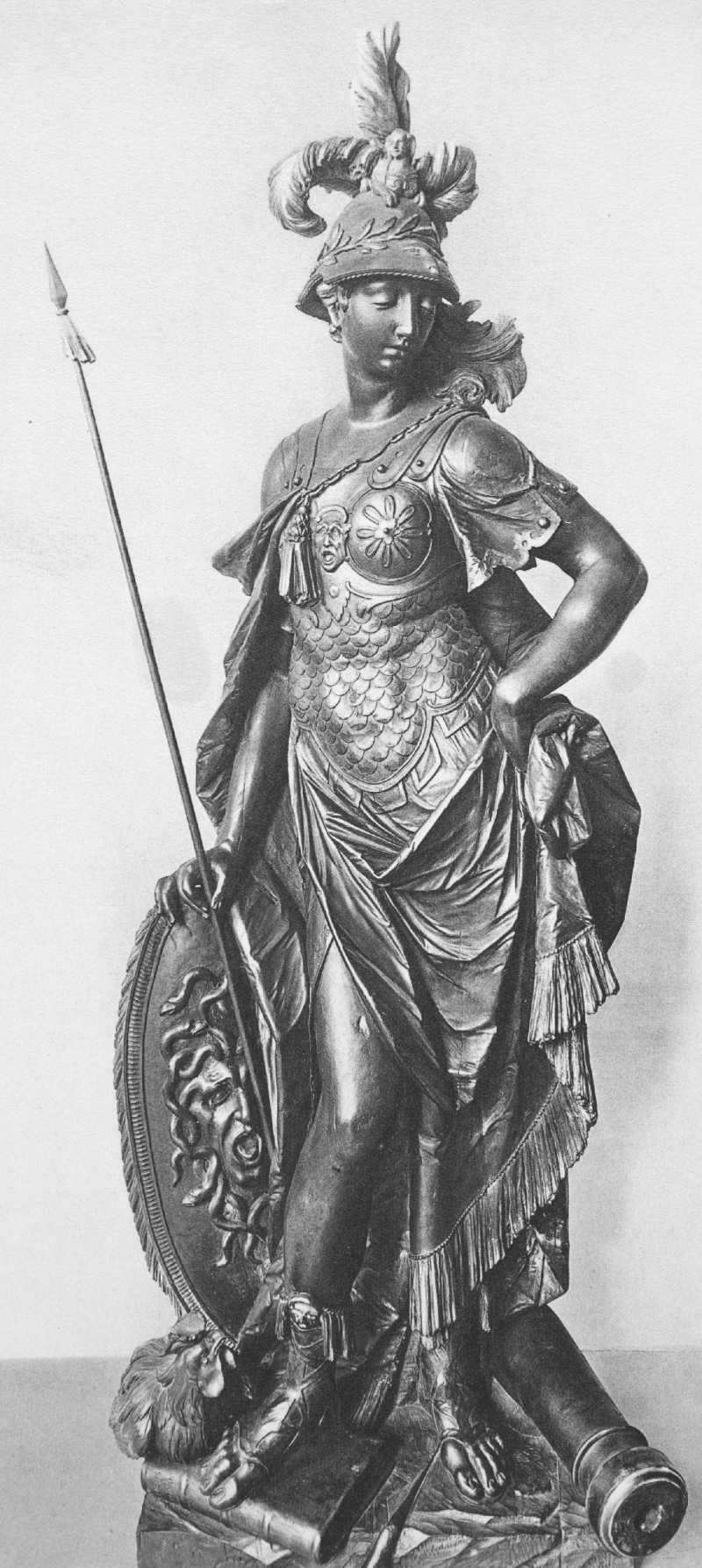Bellona

Bellona was an ancient Roman war goddess. Her greatest distinguishing feature is the military helmet she wears on her head; she frequently rides into battle in a four-horse chariot, holding a sword, spear, or shield and brandishing a torch or whip. Throughout the Roman Empire, she had numerous temples. She is known for her temple outside of Rome being the official decision-making center for war, as well as her bloodlust and frenzy in battle. Following the Renaissance, painters and sculptors expanded on her iconography.
Bellona was an ancient Sabine goddess of war who was associated with Nerio, the companion of the war god Mars, and later with the Greek war goddess Enyo. During the conflict with the Etruscans and Samnites, Appius Claudius Caecus dedicated her temple in Rome in the Circus Flaminius in 296 BCE. This temple was the first to have decorative shields dedicated to mortals placed on a sacred site. The shields were hung and consecrated to Appius Claudius' family by Appius Claudius.
Her celebration was held on June 3rd, and her priests, known as Bellonarii, would wound their own arms or legs as a blood sacrifice to her. Following the wedding, these rites took place on March 24, known as the day of blood. Bellona rituals and beliefs were frequently gory or scary. When she went to war, it was believed that Discordia, Strife, and the Furies would accompany her and frighten her foes. One of the more frequently held beliefs is that she is insane in battle due to her bloodlust. The Scordici people, according to Ammianus Marcellinus, believed in the violent worship of Bellona. They were violent, and they savagely worshiped both Mars and Bellona. They would make human sacrifices and consume blood from their victims' heads.













